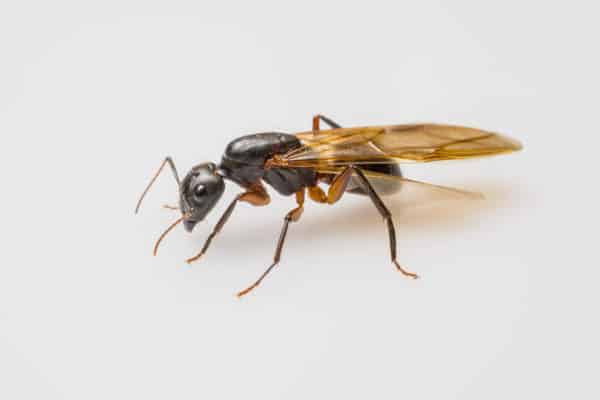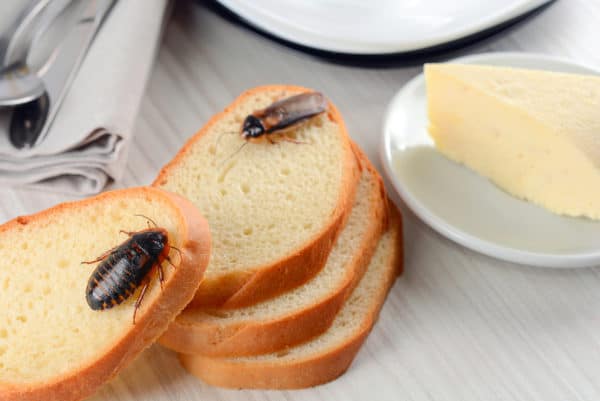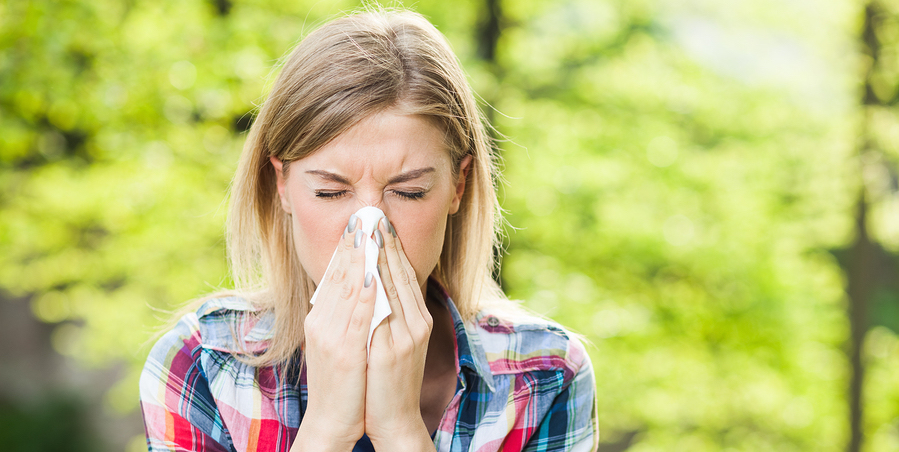READY TO GET STARTED?
REQUEST A FREE ESTIMATE
Fill out the form below or call (888) 466-7849 for a free, no-obligation estimate.

You’re lounging outside enjoying the peaceful outdoors when a flying pest zooms past you. You then realize it’s actually a flying ant! Don’t worry! Flying ants are actually very common, especially during seasons of high humidity. While flying ants are not a huge threat to humans, they can be a major nuisance, especially if they enter your home.
Flying ants swarm for the same reasons that termites swarm which is to reproduce and expand their colonies. These pests will swarm in late spring and the early summer when there’s bright sunlight and warm temperatures. Flying ants also prefer to swarm 3 to 5 days after a rainstorm.
While flying ants won’t cause damage to your home, they can make their way inside. It’s important to know what prevention steps to take when dealing with these pests.
Remember, if you see them flying by outside, don’t be too alarmed. If they end up inside your home, however, it’s always best to call your local pest control company who can determine the best plan of action.

We know pests try to make their way into our homes, but when we see one outside of the comfort of our home we often feel a loss of control or panic. We hold businesses, hospitals, and food establishments to a higher standard due to the nature of their industries.
Because of the work they do for their customers and their communities, it is even more important for these industries to have a good, ongoing relationship with a local pest control company to ensure guests and customers feel comfortable and pest-free.
With the ever-changing food regulations designed to keep patrons safe, it is important to have a tight-knit partnership with a licensed pest control professional. Pest infestations can lead to hefty fines from health departments, increased food costs due to contaminated food, and in worse cases, the closure of the business. Pest prevention procedures and proper sanitation education for staff is essential in keeping your establishment free from pests and your reputation intact.
Hospitals, rehabilitation centers, and long-term care facilities have high standards of sanitation due to the sensitive environment for patients. Pest infestations can pose serious health threats by spreading bacteria through contamination of hospital rooms and equipment. A well-detailed pest prevention plan is crucial in keeping patients and staff healthy and safe.
Reputation drives the hospitality industry and with review sites increasing in visibility and reach, one negative review can cause a bigger impact than 10 positive ones. Nothing can be more damaging to a business than a negative review detailing a pest encounter. A relationship with a local pest control company will not only protect customers from pest infestations but also protect the reputation of your business.
Commercial pest control is a science that requires a strong partnership between the business and their local pest control company. An individualized plan is critical in protecting your important investment. If you do not already have a long-standing relationship with a pest professional, give your local company a call to set up an inspection.

With the weather thankfully getting more spring-like, it’s time for a good deep-clean of your home. While a good spring clean is great for your spirit, it will also aid in keeping pests out of the house, along with your quarterly pest service. That way, you get to enjoy a pest-free spring!
Ants, pantry pests, and other common spring pests will seek to invade your kitchen where they will find food and water with ease. A deep clean of your pantry and counters can greatly reduce the occurrence of pests. If it is feasible, clean out from behind your appliances; food will have fallen that pests will find. Also, place your trash can away from doors that lead in from outside and away from windows.
Roaches and silverfish tend to be attracted to bathrooms due to the excess moisture. Reducing sources of water is the best solution to ward off an infestation. Check around tubs, sinks, and toilets for any leaks, and wipe off standing water on any surfaces.
The perfect hiding place for pests is often your basement. Mice, spiders, and many others like the dark corners to hide from the outside. Instead of using cardboard boxes for storage, go for plastic tubs with secure lids. Also, make sure to seal any found cracks; mice only need ¼” opening to enter your home!
A spring clean of the exterior of your home is crucial. Start with moving any plants and vegetation away from your home to make it harder for pests to come in. Be sure to clean out clogged gutters to eliminate another pest hiding place. You may want to consider installing gutter guards to avoid the possibility of clogged gutters. Other tips to remember: dispose of leaf piles properly and keep grass cut low.
If you suspect a pest problem in your home, contact a pest control company. They will be able to evaluate your home, identify what kind of pest you are having issues with, and set you up with a comprehensive treatment plan.

Some bugs are excellent travelers. They’ll hitchhike into your home on clothes, in luggage, on pets, in boxes, newspapers, magazines, or bags, on furniture, and even in your kids’ hair! Here are 5 well-traveled pests and tips on keeping them out of your home:
With summer vacations in full swing, out-of-town relatives visiting, and students coming home from college – now is the time to worry about bed bugs! They’ll sneak into your home unnoticed – most often in luggage and clothes – hide out during the day, and then creep out at night to feed (bite!).
Prevent bed bugs by being vigilant when traveling – check your accommodations for signs of bed bugs (dark spots on mattress corners and/or bedding), avoid putting luggage directly onto hotel beds and furniture, wash all of your clothes in hot water immediately when returning home, and leave luggage outside of your home, if possible (seal in plastic bags and leave in outdoor storage or your garage). Same applies to visiting relatives and students returning home from college. Also, remove any under-bed storage to reduce areas bed bugs are likely to hide out.
If you suspect you have bed bugs, contact an exterminator immediately. Because of the elusive nature of bed bugs and their ability to survive in extreme conditions (bed bugs can live for a year or more without eating and can withstand a wide range of temperatures from nearly freezing to 113 degrees Fahrenheit), they can’t be eliminated through do-it-yourself methods. A proper inspection is needed to identify all areas of infestation. After an in-depth inspection, a treatment and control plan can be implemented, usually including multiple chemical and/or heat treatments and inspections over several weeks. As part of the treatment plan, you may be asked by your exterminator to remove or reduce clutter, install protective encasements to your mattresses and/or boxsprings, and launder bedding and/or clothing. You should also be advised not to throw out any infested furniture, clothes or other items; this can cause the spread of bed bugs to other locations. It’s also not recommended to purchase new furniture throughout the treatment process as these items will likely become infested with bed bugs.
Once school starts back, lice infestations will be on the rise. Prevent the spread of lice by limiting shared clothing, hats, hair brushes, and other belongings, avoiding head-to-head contact, and by vacuuming carpet and furniture often. For existing lice infestations, use a lice treatment as soon as they’re discovered, disinfect combs, brushes, or towels that have come in contact with lice by soaking them in hot water for 5-10 minutes, disinfect bedding by removing it and washing in a hot water cycle, and wash and dry clothing, linens, or towels that have come into contact with a person infected with lice during at least 2 days prior to treatment.
Lookout for ticks as we move into Fall. They attach themselves to humans and pets, making transport inside easy and often unnoticed, and can even infest your home (with the case of the brown dog tick). Their bites are painful and can cause skin irritations, but they also transmit several diseases including Lyme disease and Rocky Mountain spotted fever, which can cause serious illness or even death.
Prevent ticks by checking pets often and treating them with a tick control product, commonly included in topical flea treatments, keeping pets out of wooded areas or overgrown vegetation, by cutting your grass regularly, keeping plants and shrubs trimmed, and by clearing out leaves and other yard debris.
If you find a tick, safely remove it using a tick removal tool or with tweezers, only applying a small amount of pressure until the tick lets go. Any other method can be painful for your pet (or humans!) and cause skin irritations.
Fleas thrive in hot, humid conditions. They can cause a lot of discomfort for your pets, even severe allergic reactions, and are easily transported into your home. Avoid a flea infestation by checking your pets often with a flea comb, applying topical or oral flea medication regularly, and limiting your pets’ time outside during warmer months.
If you have a flea infestation in your home, getting rid of them can be difficult and time-consuming. It’s best to contact a pest control company to establish a treatment schedule for both inside and outside the home. Your pet will need to be removed from the house during flea treatments and for a specified length of time afterwards. You can also help to get rid of fleas and prevent a future infestation by vacuuming regularly and removing old pet bedding, blankets, toys, and any other items regularly used by your pet.
German cockroaches are among one of the most prevalent pest issues in residential structures, and often the hardest to control. A common misconception is that roaches only infest homes with unsanitary conditions. While they thrive in filth, even the cleanest, tidiest homes are at risk. To prevent this, avoid bringing items into your home that roaches often travel in – boxes, newspapers, grocery bags, food cartons, pet food, furniture – and remove & wash any clothing and/or luggage immediately if you’ve encountered another home or accommodation where roaches were present.
Once inside, roaches can contaminate food, trigger allergies and asthma, create an unpleasant odor, and just altogether create an undesirable living environment. They’ll hide out in damp, dark areas during the day and come out at night in search of food. Keep your home as clean as possible to remove potential food sources eliminate any areas with excessive moisture (repair those leaky faucets!), and de-clutter.
If you’re seeing cockroaches, it’s best to contact an exterminator for a pest control treatment plan. Infestations develop quickly and roaches can become immune to OTC products, especially if used incorrectly or too often.

With Spring only a few weeks away, now is a good time to start preparing for allergy season. And what’s one of the major causes of allergies and asthma? PESTS! Don’t suffer through the beautiful spring season this year. Here are some tips to keep your home pest and allergen-free.
Pest prevention measures can be very effective at combating allergies and asthma. Common household pests, like cockroaches and stinging insects, can pose a significant threat to asthma and allergy sufferers. Roach droppings, saliva, shed skins and other body parts contain allergen proteins known to cause flare-ups and increase asthma symptoms, especially in children. And stinging insects send more than 500,000 people to the emergency room each year due to serious reactions from the pest’s venom.
The first step to a pest and allergen-free home: practice good sanitation.
In addition, the National Pest Management Association (NPMA) recommends the following tips for safeguarding homes against common indoor allergens caused by pests: